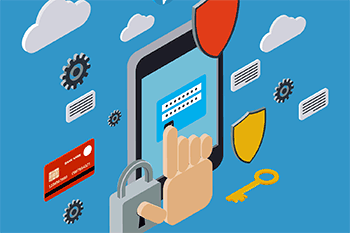Telecommuting, or remote working, is here to stay. In fact, over the last 20 years or so the numbers of remote workers or telecommuters have been steadily increasing. Nowadays up to 37 percent of employees are working remotely. This trend has been driven by improvements in technology as well as an increased desire for a better work-life balance. If your company hasn’t already done so, then you will need to consider how best to introduce remote working in your company. In this article, we look at some of the potential dangers and how to avoid them.
Telecommuting and Communication

Relying solely on email is not a good idea either. So much of our communication is actually non-verbal and our tone of voice and facial expressions can convey a thousand messages that words alone can’t. These types of cues are absent in an email and, therefore, the potential for misinterpretation or misunderstanding is much greater. Try exploring other alternatives such as video conferencing, online chat rooms or collaboration tools.
It’s also important that telecommuters still feel as though they are part of a team. Remote workers need to be kept up to speed on how the company is doing and all the latest news and updates.
To maintain productivity, morale and engagement, a telecommuter needs to feel supported, involved and included.
Performance Management
Almost by definition, it’s very hard to maintain an oversight of the remote worker’s performance. For a telecommuting program to be successful, your company will need to clearly establish goals, reporting procedures and ways to track performance. The good news is that research has shown that telecommuters tend to be more productive than office-based staff. In fact, they are able to achieve nearly an extra day’s worth of tasks over a week. What’s more, remote workers also resign half as often as their office counterparts.
Working remotely, therefore, doesn’t mean that your telecommuter is lounging in bed until 10 am and only briefly logging into the email system, mainly for the sake of appearances! What it does mean though is that you as an employer need to set clear boundaries and expectations in place. It also means that your managers need to proactively manage any remote workers. The vast majority of employees will have team and individual goals and targets as well as clear indicators for success. With the remote worker, managers need to be more proactive in regularly checking with staff to see how they’re doing and to quickly identify any factors that might be holding them back.
Troubleshooting Issues

Security
Another perceived obstacle in relation to telecommunicating is the concern that allowing access to company systems, information and data is potentially going to compromise security. The Hillary Clinton email scandal involving sensitive government emails being sent and received via a private server exposed some of the vulnerabilities in allowing workers to use their home kits. That’s why a great many companies insist on remote workers deploying essential security requirements including full disk encryption, malicious software protection, VPN, firewalls, content filtering as well as strong authentication and authorization measures.
Hiring The Right Personnel

Having identified some of the difficulties companies face in wanting to facilitate a program of remote working, let’s now turn our attention to a solution. In a single platform, a company intranet can address all these difficulties and will also be of great benefit to your office-based staff.
The Solution: A Company Intranet
Communication
Intranets make the whole process of communicating with remote workers a breeze. News bulletins on the intranet’s home page keep all employees up to date with the latest company news and events regardless of their location. What’s more, collaboration tools like shared workspaces and blogs enable team members in different geographic locations to work together on projects and share information and insights.
 Performance Management
Performance Management
Automating work processes on the intranet as well as project management tools and shared workspaces give greater transparency over work tasks and whether or not they have been completed on time. Therefore it’s much easier for the manager to identify any blockages at an early stage.
Troubleshooting Issues
Frequently asked questions, intranet staff directories with identified subject experts as well as online how-to videos, wikis and blogs are all ways that the intranet can enable remote workers to connect with sources of help and support back at head office.
Security
The security of important company information is assured with the very latest technology including 2-way SSL encrypted connections, restricted access based on site permissions or on IP address and single sign on using a solution such as OKTA’s secure web authentication.
Mobile Access

What’s more, the company intranet is fully mobile optimized which means that should the desktop network connection go down, they can still access the intranet through their smartphone or tablet. You’ll therefore be easily able to implement a trial telecommuting program without making a significant investment in kit.
Next Steps
Is your company thinking of introducing a telecommuting program but are nervous about the dangers? Contact the friendly team at MyHub for a free trial and see today how an intranet can address those concerns.


 Performance Management
Performance Management




0 Comments